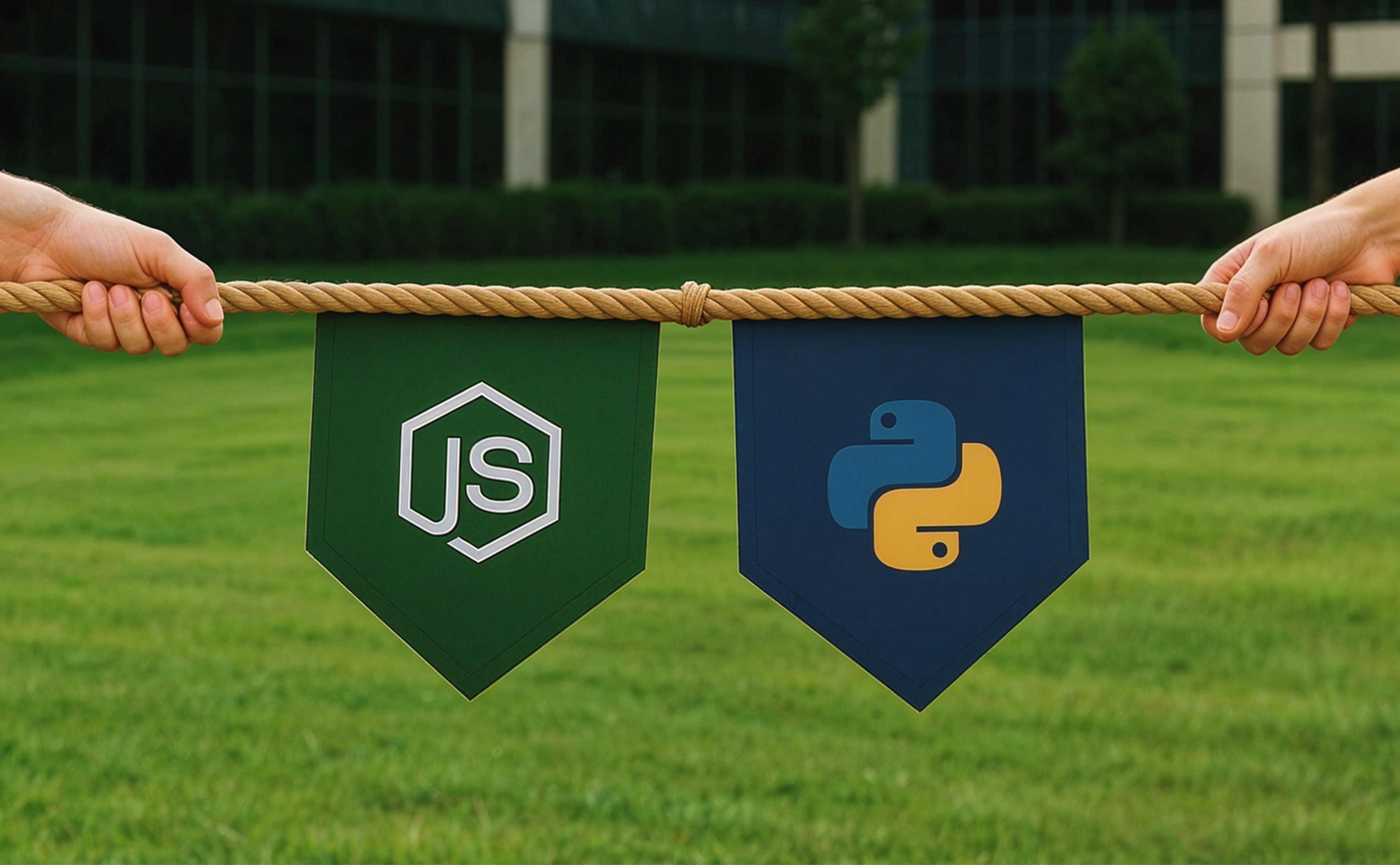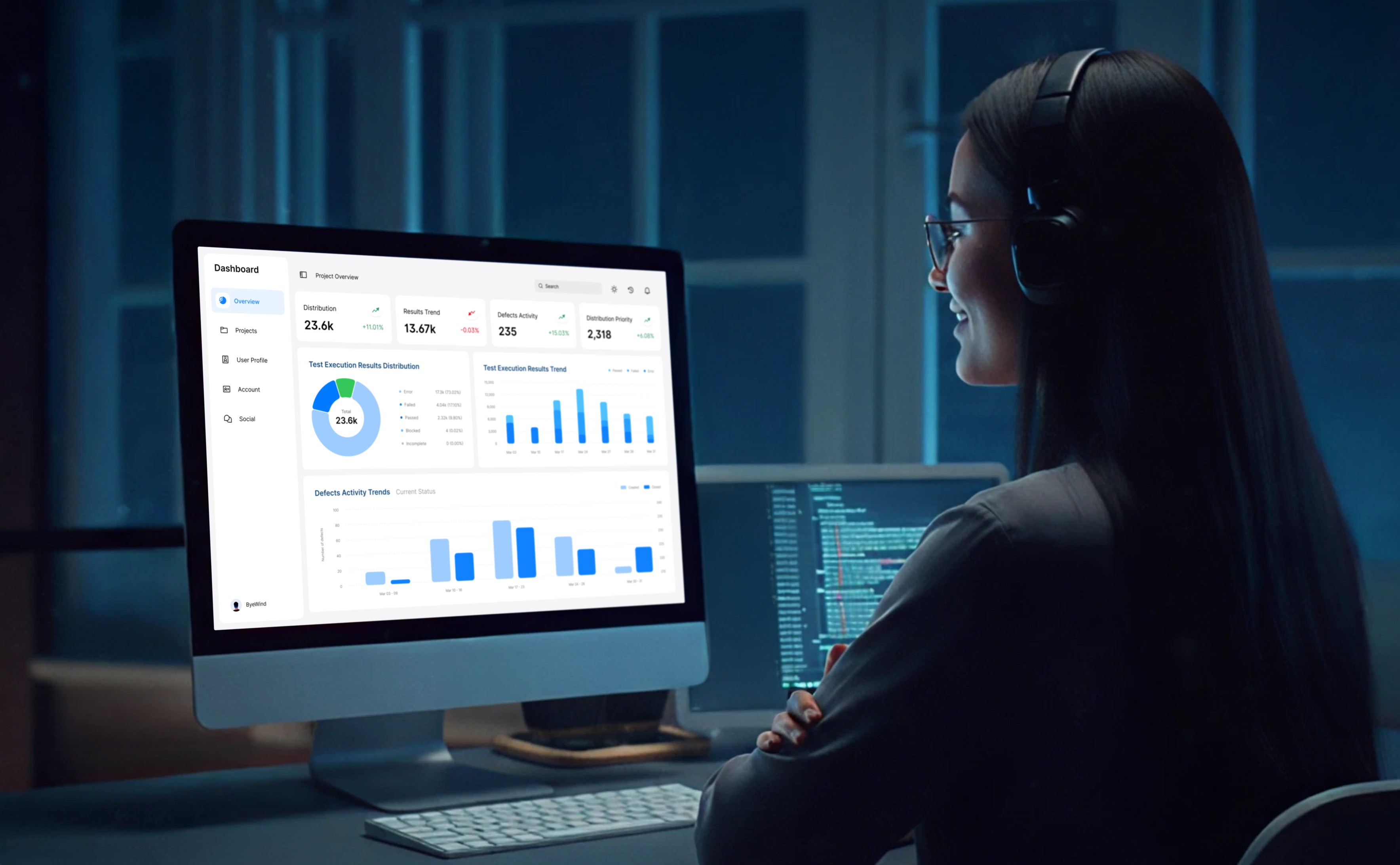Top 20 Advantages and Disadvantages of Cybersecurity

In an age where our lives are increasingly intertwined with technology, the term "cybersecurity" has become more than just a buzzword—it's a necessity. From the moment we wake up and check our phones to the time we fall asleep with our smart devices nearby, we're constantly connected to the digital world. But have you ever stopped to wonder about the invisible shield protecting your online presence?
Cybersecurity works tirelessly to protect us, they're up against some staggering odds. Did you know that every 39 seconds, there's a hacker attack? Or is the average cost of a data breach in 2024 a whopping $4.88 million? It's like trying to defend a castle against an army of invisible threats.
As we look into cybersecurity deeper, we'll explore its many facets—the good, the bad, and the downright puzzling. This guide will help you understand the ins and outs of cybersecurity.
What is Cybersecurity?
At its core, cybersecurity is like a digital immune system for our increasingly connected world. It's a set of technologies, processes, and practices designed to protect networks, devices, programs, and data from attack, damage, or unauthorised access.
Cybersecurity has become more crucial than ever today, as we rely on digital technology for everything from ordering pizza to running multinational corporations. It's not just about protecting your Facebook password anymore; it's about safeguarding entire business operations, personal identities, and even national security.
The need for robust cybersecurity measures has grown exponentially as our digital footprint expands. With the rise of remote work, cloud computing, and the Internet of Things (IoT), the potential entry points for cyber threats have multiplied.
Types of Cybersecurity
Cybersecurity has evolved into several specialised areas to address diverse threats. Let's break down the main types:
1. Network Security: Protects communication paths between computers. Uses firewalls and encryption to secure data travelling across networks.
2. Application Security: Focuses on securing software and devices. Involves regular updates and secure coding practices to protect against vulnerabilities.
3. Cloud Security: Protects data stored online from theft, leakage, and deletion. This is essential as more businesses and individuals use cloud storage.
4. Information Security: Protects data integrity and privacy, both in storage and during transfer. Ensures data remains confidential and intact.
5. Endpoint Security: Secures devices like computers and smartphones that connect to networks. Acts as a guard for each device.
6. Mobile Security: Focuses on protecting smartphones and tablets from threats like malicious apps and unsecured Wi-Fi.
7. Identity and Access Management: Ensures only authorised people can access specific resources. Controls who can see or use certain data or systems.
8. Internet of Things Security: Protects connected devices like smart home appliances. Addresses the unique challenges of securing numerous interconnected devices.
9. Data Security: Protects data throughout its lifecycle using encryption and access controls.
10. Operational Security: Involves strategies and decisions for handling and protecting data assets. Creates overall plans for data protection.
Top Advantages and Disadvantages of Cybersecurity
As technology evolves, so do its measures towards ensuring cybersecurity. Cybersecurity offers invaluable tools and techniques for businesses to remain protected against potential cyber threats. Cybersecurity provides crucial advantages such as business continuity, data protection, credibility, etc. However, it is necessary to note that it also poses disadvantages like increased costs, complexity, and constant requirement for vigilance against rising threats. Adopting regular cybersecurity measures and staying alert is essential to act against potential drawbacks. In the coming sections, let’s find out the advantages and disadvantages of cybersecurity in detail.
Advantages of Cybersecurity
Now that we've explored the various types of cybersecurity, let's look into the benefits of cybersecurity:
1. Data Safety from Hackers
Cybersecurity measures protect sensitive information from unauthorised access. They use tools like firewalls, encryption, and access controls to keep data safe. Good cybersecurity also includes regular updates and patches to fix any weaknesses that hackers might try to exploit. It's an ongoing process that adapts to new threats as they appear.
2. Safeguarding Online Transactions
Cybersecurity ensures that financial transactions over the Internet are safe. This includes online shopping, banking, and money transfers. It uses encrypted connections to protect your financial data as it travels across the internet. Cybersecurity also includes fraud detection systems that can spot unusual activity in your accounts. This protection allows people to shop and bank online with confidence, knowing their money and personal details are safe.
3. Preventing Identity Theft
Cybersecurity helps stop identity theft by protecting personal information. This includes names, addresses, social security numbers, and credit card details. It uses strong passwords, multi-factor authentication, and secure data storage to keep this information safe. Cybersecurity also includes monitoring for suspicious activities that might indicate identity theft. If someone tries to use your identity, these systems can alert you quickly. This protection helps people avoid the stress and financial problems that come with identity theft.
4. Mitigation of Financial Losses
Good cybersecurity helps prevent financial losses from cyber attacks. This includes direct theft of money and the costs of fixing damage from an attack. It also protects against fines that might come from data breaches. Cybersecurity measures can spot and stop attacks before they cause major damage. They also include backup systems to recover data if an attack does happen.
5. Decreased Data Theft Hazard
Strong cybersecurity greatly reduces the risk of data theft. It uses multiple layers of protection to keep data safe. This includes secure networks, encrypted storage, and careful control of who can access data. Cybersecurity also involves training employees to recognize and avoid risks. Regular security checks help find and fix any weak spots before they can be exploited.
6. System Availability and Improved Data
Cybersecurity keeps computer systems running smoothly and protects data quality. It includes measures to prevent system crashes and data corruption. This might involve using backup power supplies, redundant systems, and regular maintenance. Cybersecurity also includes data backup and recovery plans. These ensure that even if something goes wrong, systems can be quickly restored.
7. Protect Business Reputation
Strong cybersecurity helps protect a company's good name. In today's world, news of a data breach can spread quickly and damage customer trust. Good security shows customers that a company takes their privacy seriously. It can also help a business stand out from competitors who might not be as careful with data.
8. Assist Remote Working
Cybersecurity makes it possible for people to work safely from home or other locations. It includes secure ways to connect to company networks from outside the office. This might involve virtual private networks (VPNs), encrypted communications, and secure cloud services. Cybersecurity for remote work also includes protecting personal devices used for work.
9. Compliance with Regulations
Many industries have strict rules about protecting data. Cybersecurity helps businesses follow these rules. This can involve specific security measures, regular audits, and detailed record-keeping. Staying compliant helps businesses avoid fines and legal problems. It can also help build trust with customers who care about how their data is handled.
10. Cyber Posture is Improved
Regular security measures make an organisation better able to handle cyber threats. This includes not just preventing attacks, but also being able to respond quickly if an attack happens. It involves regular training for employees, keeping systems updated, and staying informed about new threats.
11. Handles Data Management
Cybersecurity helps manage data effectively. It includes systems for organising and storing data securely. This might involve categorising data based on how sensitive it is and applying appropriate protection. This can lead to better decision-making and more efficient operations.
12. Improve Customer's and Stakeholders' Trust
Strong cybersecurity builds trust with customers and business partners. When people know their data is safe, they're more likely to do business with a company. Good cybersecurity can also make partnerships with other businesses easier, as they'll be more confident sharing information. This trust can lead to stronger, longer-lasting business relationships.
13. Defence Against Malware
Cybersecurity provides strong protection against various types of malicious software. This includes viruses, worms, trojans, and ransomware. It uses tools like antivirus software, vulnerability scanning tools, firewalls, and intrusion detection systems to spot and stop malware. Regular system updates are also part of malware defence, as they fix known vulnerabilities.
14. Recovery of the System
Good cybersecurity includes plans for recovering from attacks or system failures. This involves regular backups of important data and systems. It also includes detailed plans for how to restore systems quickly if something goes wrong. These plans are regularly tested to make sure they work. Quick recovery can minimise downtime and financial losses from an attack.
Disadvantages of Cybersecurity
Let's explore some of the drawbacks that come with implementing robust cybersecurity measures:
1. Complexity
Cybersecurity systems can be intricate and difficult to manage, especially for smaller organisations or individuals without technical expertise. This complexity often requires specialised knowledge and skills to implement and maintain effectively. Organisations may need to invest in extensive training programs or hire dedicated experts to properly manage their cybersecurity infrastructure, which can be challenging and resource-intensive.
2. Cost
Implementing and maintaining effective cybersecurity measures can be expensive. This includes costs for hardware, software licenses, regular updates, and skilled personnel. Ongoing expenses for monitoring, incident response, and recovery can also add up. For many businesses, especially small and medium-sized enterprises, these costs can represent a significant portion of their IT budget, potentially impacting other areas of operations.
3. False Sense of Security
The presence of cybersecurity measures can sometimes lead to complacency among users and organisations. This false sense of security can result in reduced vigilance and a tendency to overlook potential vulnerabilities. It may also lead to decreased investment in security awareness training or reluctance to update systems, inadvertently creating new security gaps.
4. Privacy Concerns
Many cybersecurity measures involve monitoring user activities, which can raise significant privacy issues. This includes tracking internet usage, scanning emails, and logging access to various systems. The collection and storage of this data can be concerning for employees and customers alike. Organisations must carefully balance security needs with privacy rights, which can be challenging and may require complex policies and procedures.
5. User Inconvenience
Security measures often introduce additional steps or restrictions in everyday tasks, which can reduce user-friendliness. This may include complex password requirements, multi-factor authentication, limited access to certain websites or applications, and frequent security checks. These measures, while necessary, can lead to frustration and reduced productivity among users who must navigate these security protocols regularly.
6. Skill Shortage
There is a significant global shortage of cybersecurity professionals, making it challenging for organisations to find and retain qualified personnel. This shortage can lead to overworked staff, gaps in security coverage, and increased vulnerability to attacks. It also drives up the cost of hiring and retaining skilled professionals, further exacerbating the financial burden of cybersecurity.
7. Potential for Human Error
Despite robust technological defences, human error remains a significant vulnerability in cybersecurity. This includes falling for phishing attacks, using weak passwords, mishandling sensitive data, or failing to follow security protocols. Even a single mistake can potentially compromise an entire system, undermining substantial investments in security infrastructure.
8. Constantly Evolving Threats
The cybersecurity landscape is characterised by rapidly evolving threats. New types of malware, attack vectors, and hacking techniques emerge constantly. This necessitates continuous adaptation of security measures, requiring ongoing investment in research, development, and implementation of new security solutions. Organisations must remain vigilant and agile to keep pace with these evolving threats.
9. Impact on Performance
Security measures can have a noticeable impact on system and network performance. Real-time scanning, encryption processes, and other security protocols can consume significant computational resources. This can result in slower system response times, reduced network speeds, and overall decreased performance, potentially affecting productivity and user satisfaction.
10. International Scope
The global nature of cyber threats presents significant challenges in law enforcement and regulation. Attackers can operate across international borders, exploiting differences in legal systems and enforcement capabilities. This makes it difficult to prosecute cybercriminals and enforce consistent security standards globally, potentially leaving vulnerabilities that can be exploited across different jurisdictions.
11. Need for Constant Monitoring
Effective cybersecurity requires continuous, round-the-clock monitoring of systems and networks. This involves real-time analysis of logs, alerts, and potential threats. The need for constant vigilance can be resource-intensive and stressful for security teams. It also requires sophisticated monitoring tools and often necessitates a 24/7 staffing model, which can be challenging to maintain.
12. Regular Updates
Security software, firmware, and protocols require frequent updates to remain effective against new threats. These updates can be disruptive to normal operations, often requiring system restarts or temporary downtime. There's also a risk that updates may introduce new bugs or compatibility issues, potentially causing system instability or conflicts with other software.
13. Slowing Down the System
Security processes such as real-time scanning, data encryption, and access control mechanisms can significantly impact system performance. This is particularly noticeable on older hardware or during peak usage times. The resulting slowdowns can affect user productivity and satisfaction, potentially leading to attempts to bypass security measures for the sake of efficiency.
5 Most Common Cyberattacks
Let's explore the top five threats that cybersecurity measures aim to defend against:
1. Malware
Software designed to harm computer systems. Includes viruses, worms, trojans, and ransomware. Malware can steal data, corrupt files, or encrypt information for ransom. Protect systems with updated antivirus software and regular security patches.
2. Phishing
A deceptive method where attackers impersonate trusted entities to obtain sensitive data. Often utilises fake emails or websites mimicking legitimate ones. Verify sender identities and exercise caution when providing personal information online to prevent phishing attacks.
3. Man-in-the-Middle (MitM) Attack
An attack where a third party intercepts communication between two parties. The attacker may monitor or alter the exchanged data. Use encrypted connections and avoid unsecured public Wi-Fi networks to mitigate MitM attack risks.
4. Denial-of-Service (DoS) Attack
An attack that overloads a system or network, rendering it inaccessible. Distributed Denial-of-Service (DDoS) attacks use multiple sources for greater impact. Implement robust network security measures and consider specialised DDoS protection services for defence.
5. Password Attack
An attempt to gain unauthorised access by compromising passwords. Methods range from simple guessing to advanced algorithms. Employ strong, unique passwords and activate multi-factor authentication to enhance account security.
Important Principles of Cybersecurity
These principles, known as CIA (Confidentiality, Integrity, Availability) and AAA (Authentication, Authorization, Accountability), form the core of effective cybersecurity strategies:
1. Confidentiality
Confidentiality is about keeping data private and accessible only to authorised parties. This principle is crucial for protecting sensitive information from unauthorised access or disclosure.
- Implementation: Encryption, access controls, secure communication protocols
- Examples:
- Using end-to-end encryption for messaging apps
- Implementing role-based access control in corporate networks
- Securing data transmission with HTTPS
2. Integrity
Integrity ensures that data remains accurate, complete, and unaltered throughout its lifecycle. It prevents unauthorised modifications and maintains the trustworthiness of information.
- Implementation: Checksums, digital signatures, version control systems
- Examples:
- Using hash functions to verify file integrity
- Implementing blockchain for tamper-evident record-keeping
- Utilising digital signatures for software distribution
3. Availability
Availability ensures that authorised users can access systems, networks, and data when needed. It's about maintaining operational continuity and preventing disruptions.
- Implementation: Redundancy, load balancing, disaster recovery plans
- Examples:
- Using cloud-based backup systems
- Implementing failover systems for critical infrastructure
- Employing Content Delivery Networks (CDNs) for web services
4. Authentication
Authentication verifies the identity of users, devices, or systems before granting access. It ensures that only legitimate entities can interact with protected resources.
- Implementation: Passwords, biometrics, multi-factor authentication (MFA)
- Examples:
- Using fingerprint scanners for device unlock
- Implementing SMS-based two-factor authentication for online accounts
- Employing smart cards for physical access control
5. Authorisation
Authorisation determines what actions or resources a verified entity can access. It enforces the principle of least privilege, granting only the necessary permissions.
- Implementation: Access control lists (ACLs), role-based access control (RBAC)
- Examples:
- Configuring file system permissions in operating systems
- Setting up user roles in content management systems
- Implementing API keys with specific permissions for third-party integrations
6. Accountability
Accountability involves tracking and recording user activities within a system. It ensures that all actions can be attributed to specific users or processes.
- Implementation: Logging systems, audit trails, non-repudiation mechanisms
- Examples:
- Maintaining detailed system logs for server activities
- Implementing transaction logs in financial systems
- Using digital signatures to ensure non-repudiation in email communications
Is Cybersecurity the Need of the Hour? Weighing the Pros and Cons
On one side, we have the undeniable cybersecurity benefits: safeguarding our personal and financial information, protecting businesses from potentially crippling attacks, and fostering trust in our increasingly digital world. Cybersecurity acts as a vigilant guardian, working tirelessly to keep our digital lives safe and secure.
But on the flip side, we can't ignore the hurdles: the complexity that can overwhelm, the costs that can strain budgets, and the constant cat-and-mouse game with evolving threats. It's a reminder that perfect security is an ideal we strive for, rather than a destination we reach.
So, where does this leave us? In a world where cyber threats are as real as physical ones, cybersecurity isn't just an option—it's a necessity. It's about creating a resilient system that can adapt, respond, and recover.
As we look to the future, the importance of cybersecurity will only grow. With the rise of technologies like artificial intelligence, 5G networks, and the Internet of Things, our digital footprint is expanding, and so too must our security measures.
The digital world doesn't slow down, and neither do cyber threats. Amidst this constant flux, Webandcrafts (WAC) stands tall in security expertise. WAC doesn't just react to cyber challenges – they anticipate them. Our Cyber Security solutions are designed to fortify businesses and individuals against the relentless tide of digital threats. With WAC at your side, you're not just defending against today's threats – you're preparing for tomorrow's. Contact us right away!
Looking to strengthen your cybersecurity strategy?
Let's talkLoading...
FAQs
- Identify: Understanding what needs to be protected.
- Protect: Implementing safeguards to ensure delivery of critical services.
- Detect: Identifying the occurrence of a cybersecurity event.
- Respond: Taking action regarding a detected cybersecurity incident.
- Recover: Maintaining plans for resilience and restoring capabilities.
- Technical skills (networking, systems administration, programming)
- Knowledge of security technologies and protocols
- Analytical and problem-solving skills
- Understanding of cyber threats and attack methods
- Communication skills
- Continuous learning aptitude (to keep up with evolving threats)
- Use strong, unique passwords for each account
- Enable two-factor authentication where possible
- Keep your software and operating systems updated
- Be cautious about clicking links or downloading attachments from unknown sources
- Use a reputable antivirus program
- Be mindful of what you share on social media
- Use secure, encrypted connections (look for HTTPS) when browsing
- AI and machine learning for threat detection and response
- Increased focus on cloud security as more businesses move to the cloud
- IoT security as more devices become connected
- Zero Trust security models
- Emphasis on privacy regulations and compliance
- Rise of remote work security solutions
Discover Digital Transformation
Please feel free to share your thoughts and we can discuss it over a cup of tea.









